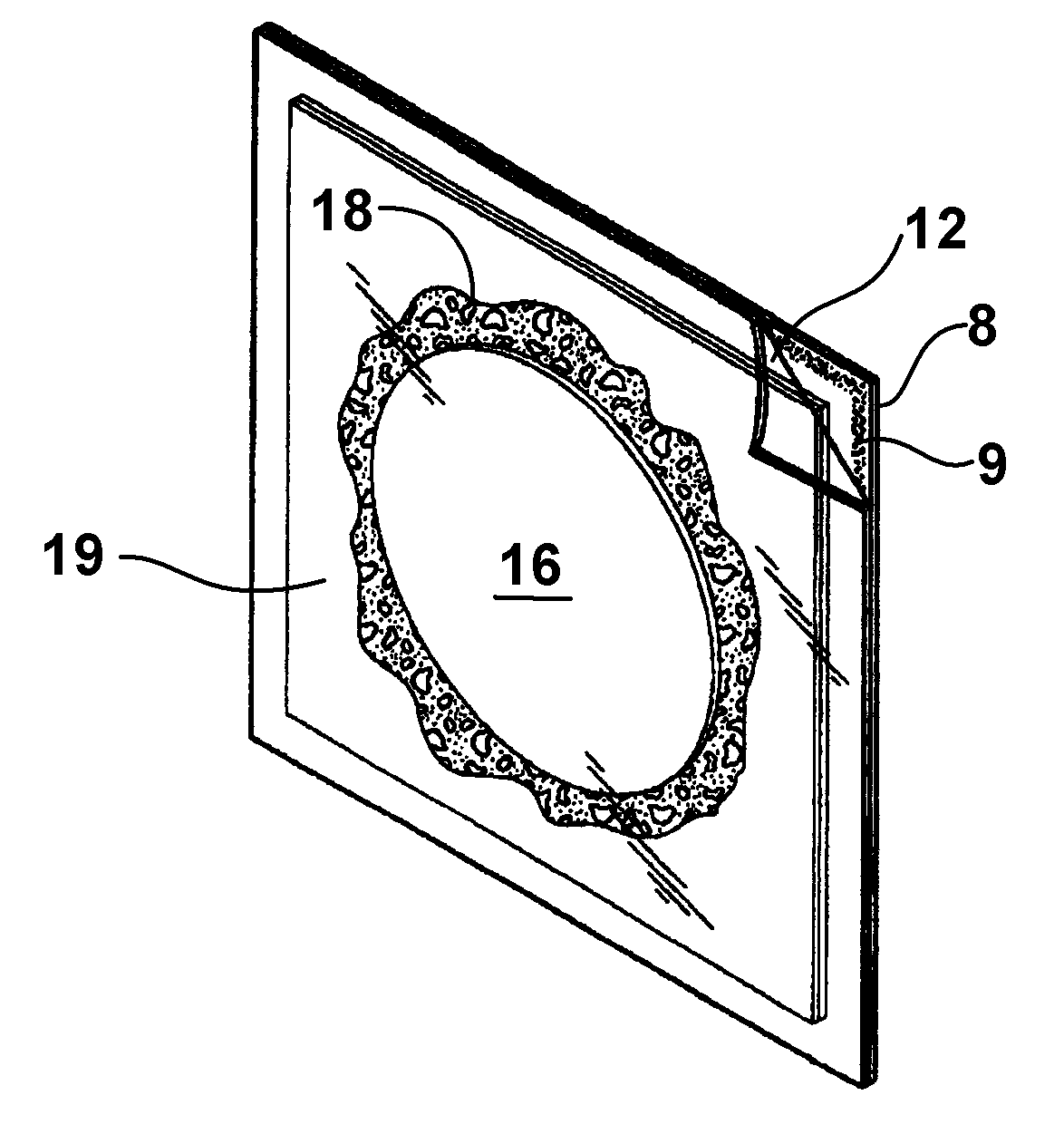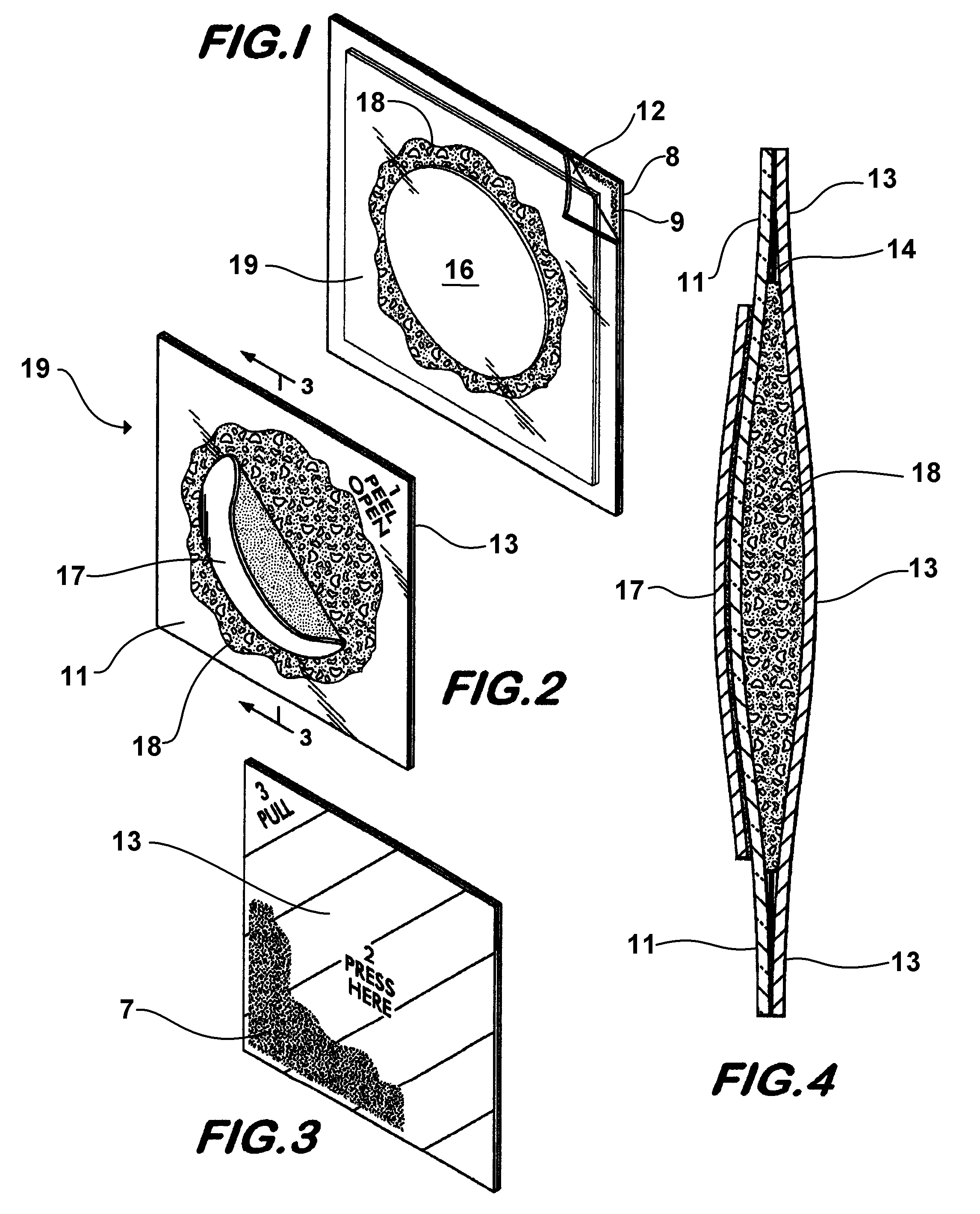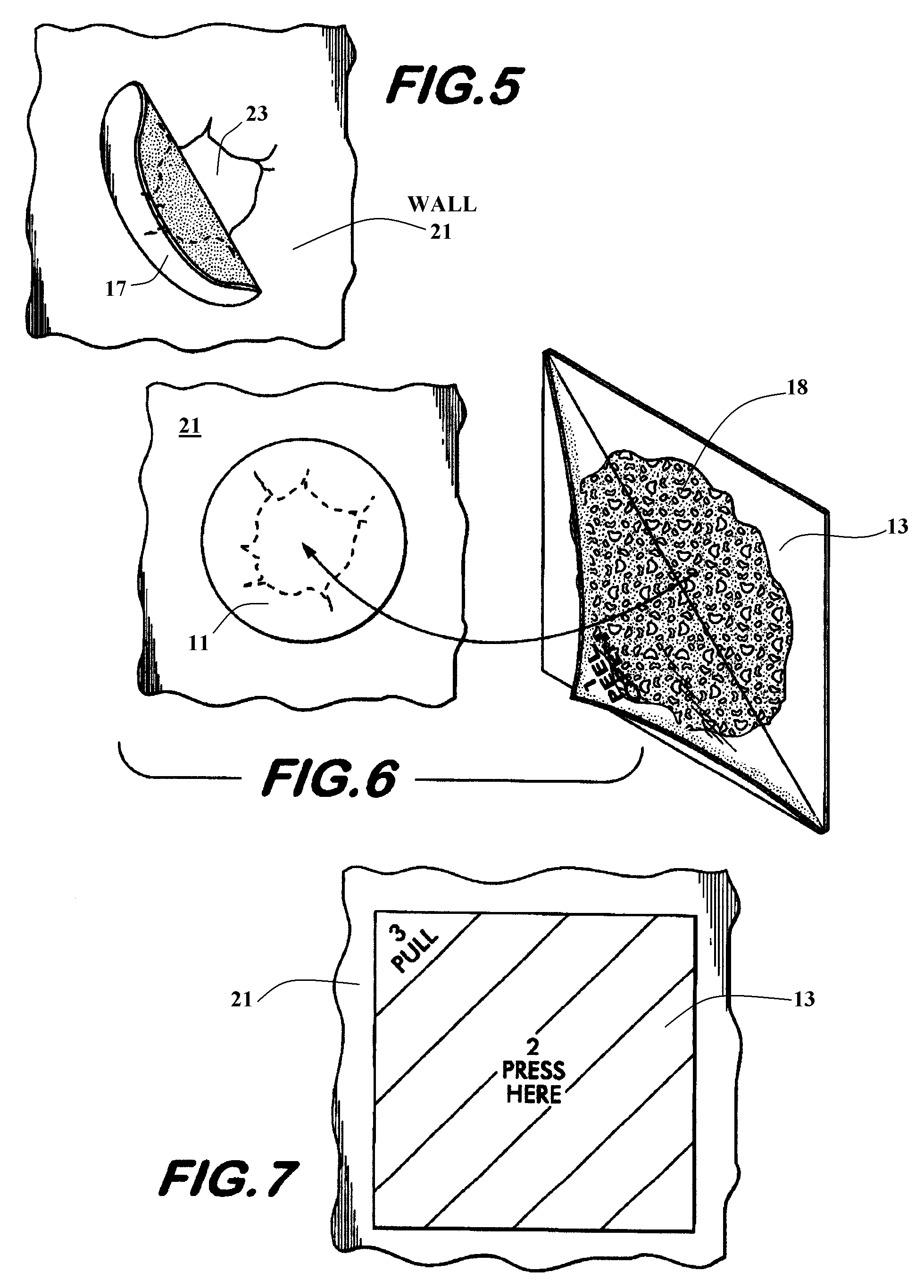Drywall joint compound applicator for seam and patch surfacing
a joint compound and patch technology, applied in the field of wall and ceiling surface repair and materials, can solve the problems of patch not avoiding direct contact with the messy and sticky joint compound, requiring special knowledge and tools, and requiring the handling of sticky, messy drywall compound
- Summary
- Abstract
- Description
- Claims
- Application Information
AI Technical Summary
Benefits of technology
Problems solved by technology
Method used
Image
Examples
Embodiment Construction
[0027]Referring now to FIG. 1, the wall-repair compound delivery system of the invention comprises an outer airtight packaging 16, shown in this embodiment by opposing sheets 12 and 8, sealed around the edge by adhesive 9. In this embodiment the operative components 19 are shown with a transparent front sheet in this airtight packaging which ensures that compound 18 is prevented from drying out and remains wet. The first step in using the invention is to peel open the packaging and dispose of it.
[0028]Referring now to FIG. 2, the operative constituents of the invention 19 comprise four basic elements: A peel-apart wrapper, consisting of a front half 11 and an opposing rear half 13, a quantity of settable compound such as wallboard joint compound 18 therebetween, and a self-adhesive dry patch 17 fixed to the outside of the front wrapper half. As shown in this embodiment, the front wrapper half 11 is transparent. As shown in FIG. 3, the rear wrapper half 13 is non-transparent and incl...
PUM
| Property | Measurement | Unit |
|---|---|---|
| transparent | aaaaa | aaaaa |
| area | aaaaa | aaaaa |
| pressure | aaaaa | aaaaa |
Abstract
Description
Claims
Application Information
 Login to View More
Login to View More - R&D
- Intellectual Property
- Life Sciences
- Materials
- Tech Scout
- Unparalleled Data Quality
- Higher Quality Content
- 60% Fewer Hallucinations
Browse by: Latest US Patents, China's latest patents, Technical Efficacy Thesaurus, Application Domain, Technology Topic, Popular Technical Reports.
© 2025 PatSnap. All rights reserved.Legal|Privacy policy|Modern Slavery Act Transparency Statement|Sitemap|About US| Contact US: help@patsnap.com



